You walk across an old, but sturdy footbridge above the Odet river. Lined both sides with flowers and plants that you peek between to see a gothic Cathedral to your left towering high above the tree-lined streets and the old city walls. The sound of the river running slow and smooth beneath your feet takes you back to a forgotten time where romance was king and the bliss of just being alive was the plat du jour. Love and joy permeate the air. And the faint smell of crêpes. Or maybe you’re just imagining that smell as you wander towards the center of the old town to a tiny shop to be served exactly what royals and commoners alike have delighted in for centuries in this magical city.
You, my friend, are in QUIMPER.

Quimper (pronounced “kam-PEAR”) is one of my very favorite cities in all of France. With just over 60,000 residents, the only French city of its size that is further west is Brest. Tucked into the Northwestern corner of France, Quimper is the prefecture (capital city) of the department of Finistère – one of four departments that make up the French region known to the world as Brittany.

There are 10 foot bridges that cross the Odet in the heart of Quimper. Each one has a name, a history and a certain, particular delight in its crossing. Most of them are just wide enough for two people to comfortably pass each other by without turning sideways. And like most signs in Brittany, their entrances are marked after their names both in French (passerelle) and the ancient language of the region, Breton (treuzell).

Beyond just crêpes and galettes (if you don’t know the difference, keep reading) there are several other culinary delights tied historically and lovingly to the region. My favorite, the kouign-amann (kwee-nyah-MAHN), continues to revel in the highest accolades from across this land of ridiculously delicious pastries and well beyond its borders. Known as much for its indescribably sumptuous decadence as the enormity of its fat and calorie content, this rustic French masterpiece reportedly was born of a moment of desperation when a desert-less baker in nearby Douarnenez fashioned leftover bread dough and COPIOUS amounts of butter and sugar into possibly the most intensely satisfying pastry in all the world.
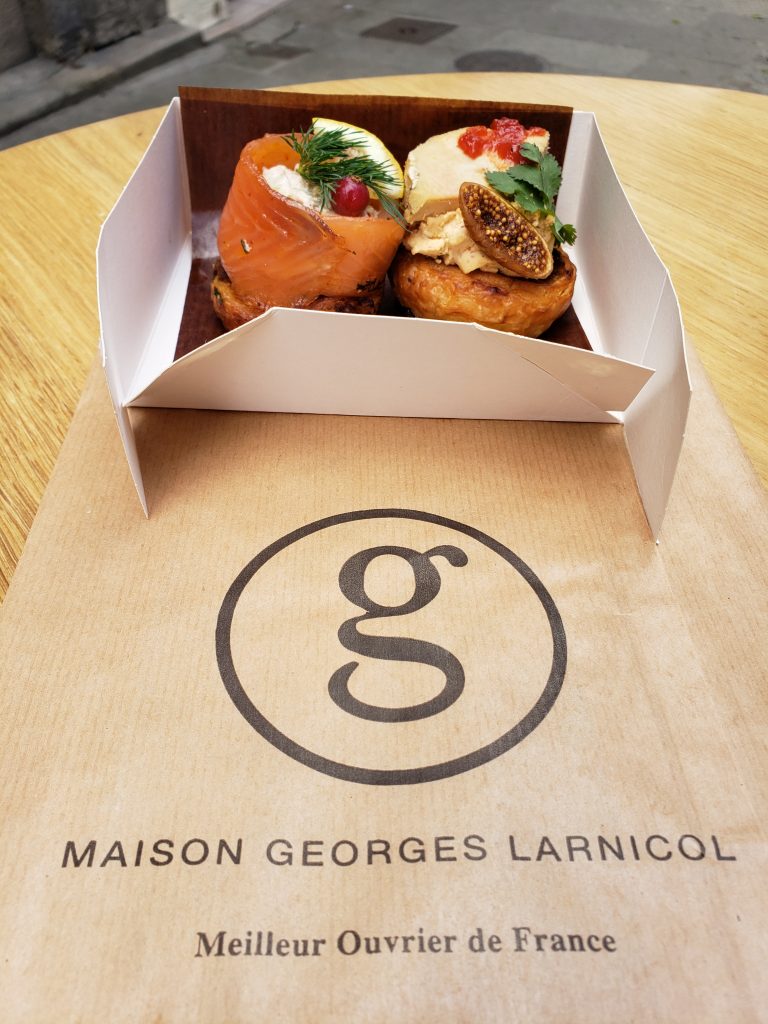
Maison Georges Larnicol sells traditional kouign-amanns and mini versions that they call kouignettes. These tiny delights are made in the traditional manner as well as in a savory style with much-reduced levels of butter and sugar. The latter being rather boring by themselves, when topped with things such as smoked salmon and foie gras as seen in the above photo, they are sublime. And an absolute must-do in Quimper.
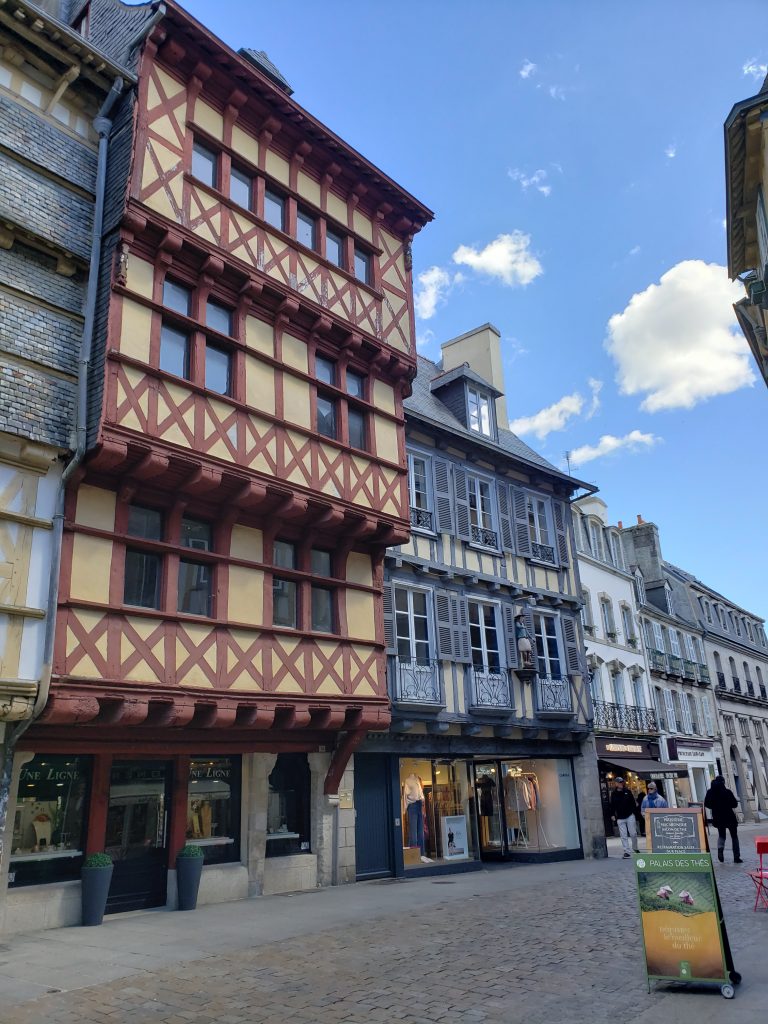
The old town of Quimper is full of half-timbered (Tudor-style) buildings – many several stories tall. As rustic as the culinary delights of the area, the architecture lends an old-world ambience to strolling its cobblestone streets. The bottom levels of these buildings house everything from decades-old bistros, restaurants and crêperies to the most modern boutiques of the day. Plenty of gift and other shops abound and public toilets are strategically placed in multiple locations in and around the city center.
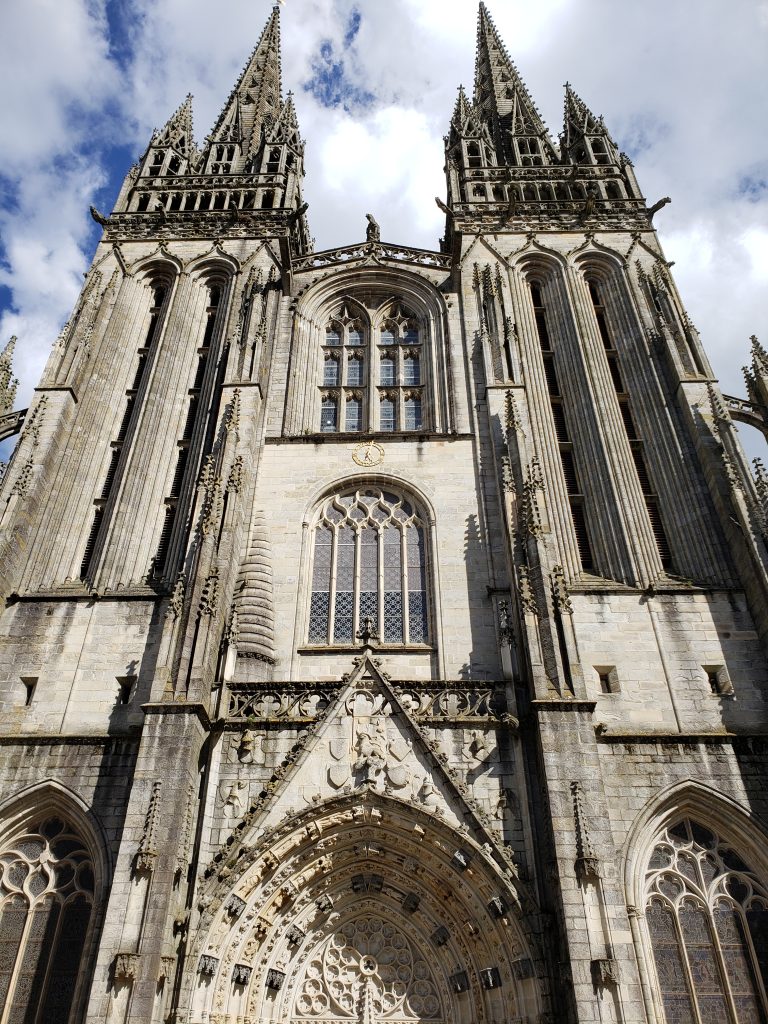
The centerpiece of the old town is the Saint Corentin Cathedral, the first part of which was constructed in 1239. This Roman Catholic cathedral is a national monument and the seat of the Diocese of Quimper and Léon. Its gorgeous and inspiring western façade is notoriously difficult for visitors to photograph due to its height and the buildings directly across from it with trees and rows of outdoor restaurant seating in front of them. Inside you’ll find a grand and inviting nave, numerous pieces of art and a great number of stained-glass windows. A tour is highly recommended as there is so much to see and learn about in this magnificent and historical monument.

The western end of the old town finds the much smaller Steir river and its confluence with the Odet. There is also a park with a childrens play area and paths that follow the Steir as it winds around bends to the north. And of course, many more places to eat, drink and shop including an indoor produce, meat and fish market. The Church of Saint Matthew may not be as grand as its neighbor to the east, but is well worth a visit.
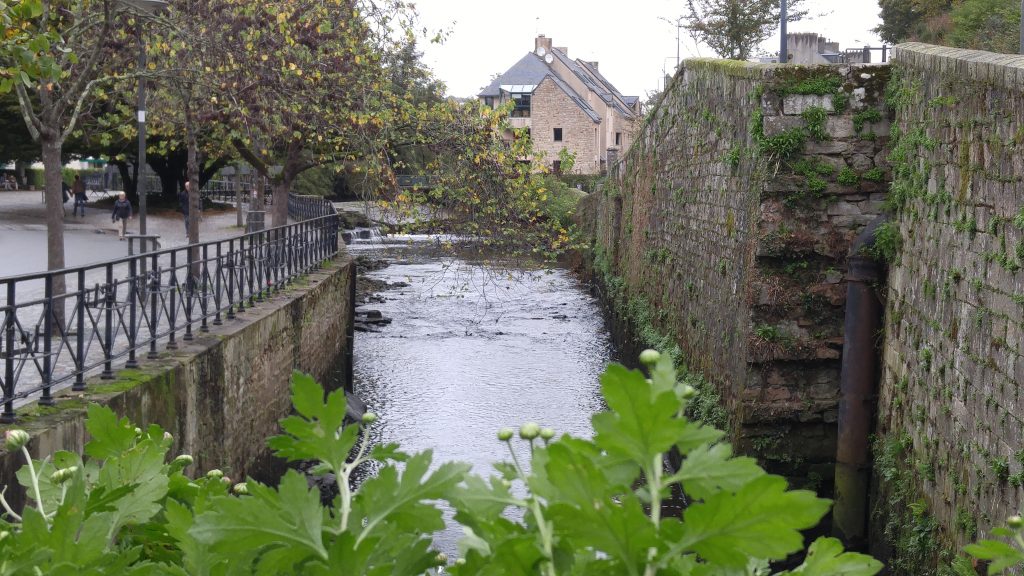
I mentioned crêpes and galettes earlier and I would be remiss to not give them proper and due attention! To say that they are a staple of the Breton diet and culinary scene might be the grandest understatement one could possibly make. Essentially, a crêpe is a sweet treat made with wheat flour (blé/froment) and a galette is a savory treat made of buckwheat – also known as black wheat (blé noir). A batter is spread in a circular motion around a large, flat, circular hot plate and cooked up like a thin pancake. The region is also famous for its salted butter caramel, so if you’re going to have a sweet crêpe I highly recommend choosing that as your filling and topping it with whipped cream (chantilly/crème fouettée) or vanilla ice cream.
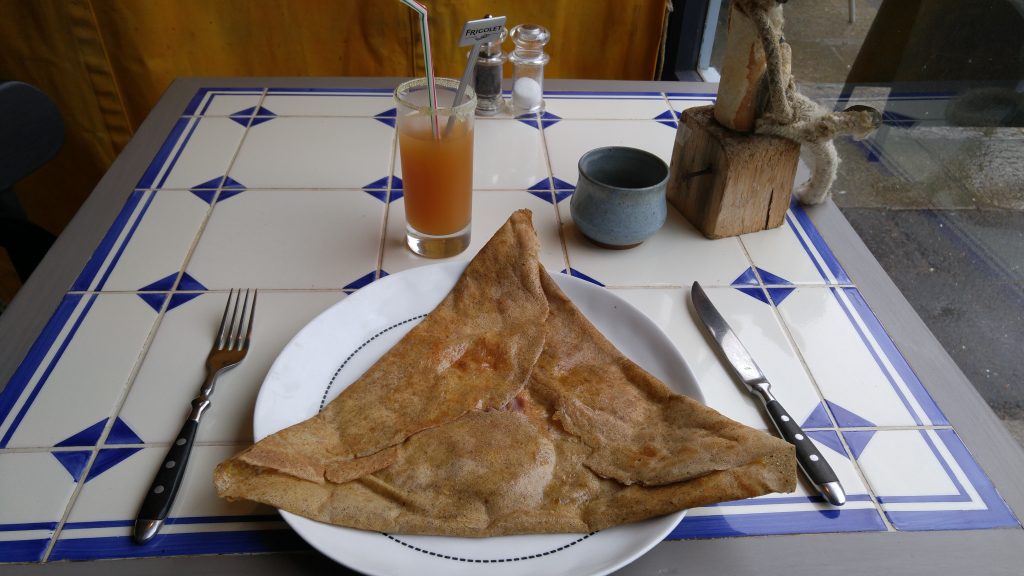
Galette fillings range widely and menu items often include egg. The French not being much for an eggs-and-bacon breakfast, this is a great way to get your fix when dining out in Brittany. I suggest trying the andouille de Guémené with eggs and cheese. Andouille de Guémené is quite different from the andouille sausage you are most likely used to. This sausage is made from long, flat sheets of pork meat, intestine, onion, wine and seasonings rolled up into what looks like a big summer sausage, wrapped in a beef casing, smoked and hung for months to dry. The concentric circles in each slice make it unmistakable to the eyes and the flavor is as delightful as the countryfolk of Brittany and the gorgeous land they live upon.
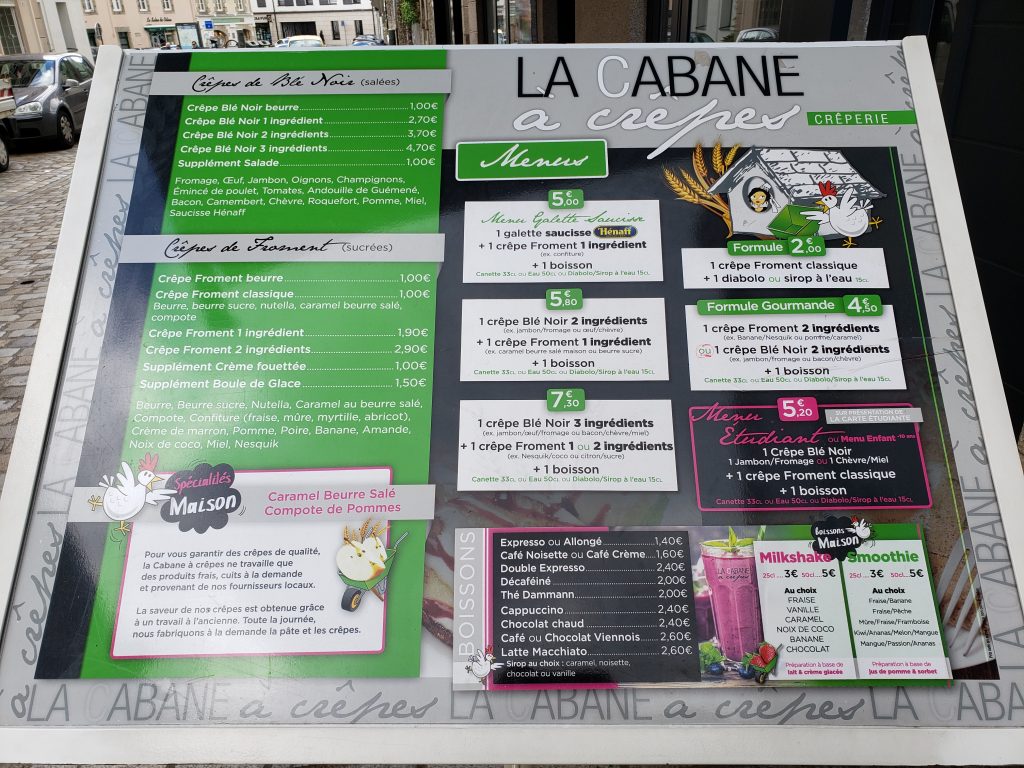
Rustic, romantic and often rainy Quimper, France is a must-visit if you’re ever in the region. Spend a relaxing day strolling the streets of the old town or spend a little more time here and get to know the city and the surrounding area a little better. The longer you stay, the more time you’ll have to visit places like the Château de Lanniron and its gorgeous park and gardens, any or all of several museums and galleries such as the Breton County Museum and all kinds of activities – hiking, horse riding, canoeing, golf – you name it. Just make sure to stop by the tourism office (www.quimper-tourisme.bzh) as soon as you arrive. They can answer all of your questions and give you a free map so you can get an idea of the lay of the land.
Until next time, au revoir !

Sending you big hugs from across the pond in Portland, Oregon! We miss you and are glad to see you are thriving in France! xo Michelle
Thank you so much, Michelle! Miss you guys! HUGS!!